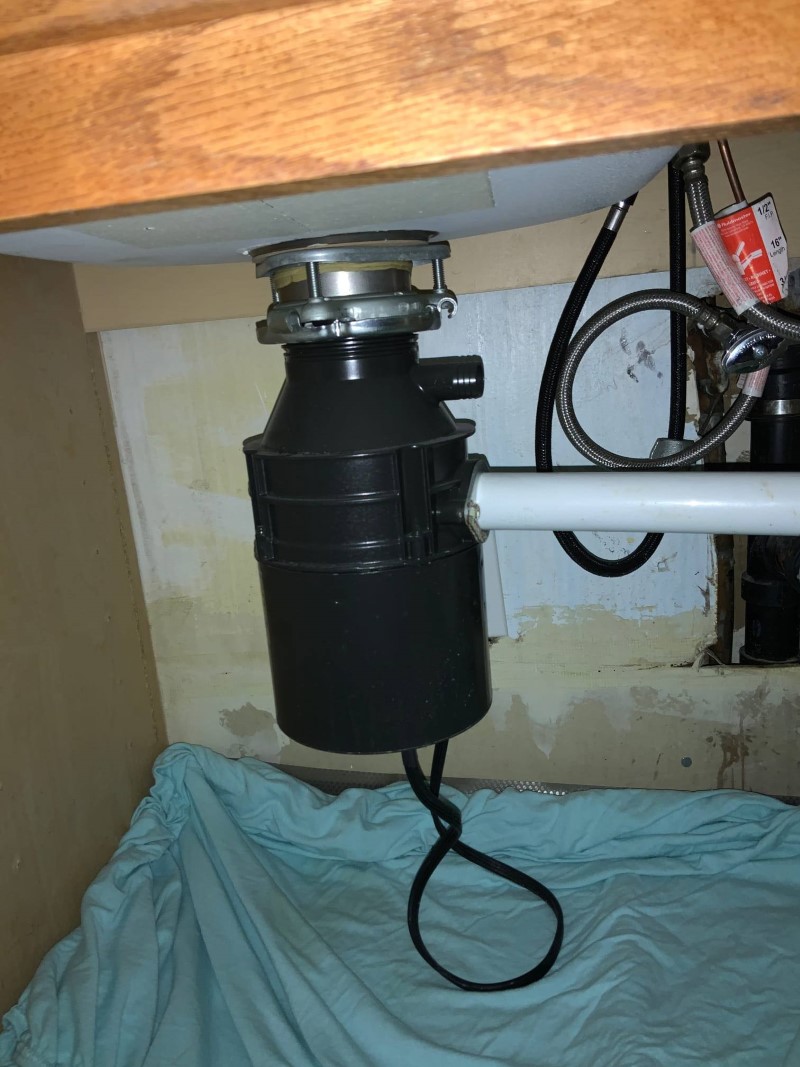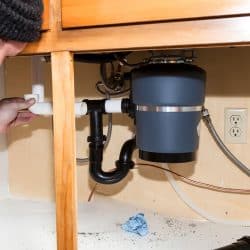Handy Techniques for Repairing a Dripping Garbage Disposal
Handy Techniques for Repairing a Dripping Garbage Disposal
Blog Article
Right here down the page you can get more very good content pertaining to Why Is .

Waste disposal unit are necessary kitchen area devices that help in getting rid of food waste successfully. Nonetheless, a dripping waste disposal unit can be an aggravating and untidy problem to handle. Luckily, numerous leakages can be dealt with easily with a couple of simple steps. In this article, we will talk about how to deal with a leaking garbage disposal properly.
Intro
Waste disposal unit are installed under kitchen area sinks and are created to shred food waste right into smaller items, enabling it to go through the pipes system easily. While these gadgets are typically trustworthy, leaks can happen over time as a result of deterioration, loosened links, or damages to the device.
Usual Causes of Leakages in Rubbish Disposals
Worn Seals and Gaskets
Seals and gaskets play a crucial function in avoiding water from leaking out of the garbage disposal. In time, these elements can degrade, leading to leaks around the disposal device.
Loose Connections
The connections in between the waste disposal unit and the pipes system can become loose with time, triggering water to leakage out during operation.
Splits or Holes in the Disposal System
Physical damages to the garbage disposal, such as fractures or holes in the real estate, can also result in leakages.
Recognizing the Resource of the Leak
Before trying to repair a leaking waste disposal unit, it is essential to determine the source of the leakage. This can generally be done through visual evaluation or by carrying out easy tests.
Visual Inspection
Examine the waste disposal unit system meticulously for any kind of signs of water leak. Pay very close attention to locations around seals, gaskets, and link points.
Examining for Leaks
One method to examine for leaks is by running water with the disposal system and looking for any type of visible indications of leak.
Tools and Products Needed for Fixing a Leaking Garbage Disposal
Before starting the repair work process, gather the required devices and materials, consisting of a screwdriver, adjustable wrench, plumbing technician's putty, substitute seals or gaskets, and epoxy or patching product for repairing cracks or openings.
Step-by-Step Guide to Fixing a Dripping Waste Disposal Unit
Shut off the Power
Prior to attempting any type of fixings, make sure that the power to the waste disposal unit device is shut off to avoid the threat of electrical shock.
Locate the Leak
Recognize the specific location of the leak and identify the reason.
Tighten up Connections
Utilize a wrench to tighten up any kind of loosened links in between the disposal unit and the plumbing system.
Replace Seals or Gaskets
If the leak read more is due to used seals or gaskets, eliminate the old components and change them with new ones.
Patching Fractures or Openings
For splits or openings in the disposal device, usage epoxy or an ideal patching product to seal the broken area.
Checking the Garbage Disposal After Fixing
As soon as the fixing is total, evaluate the waste disposal unit by running water via it to make sure that the leakage has actually been settled.
Preventive Maintenance Tips to Stay Clear Of Future Leaks
To avoid future leakages, it is essential to execute regular maintenance on your waste disposal unit. This consists of maintaining it clean, avoiding placing non-food items or tough objects down the disposal, and occasionally looking for leakages or various other concerns.
Final thought
To conclude, fixing a leaking garbage disposal is a relatively simple process that can be finished with standard devices and materials. By following the actions outlined in this article and exercising precautionary maintenance, you can maintain your garbage disposal in good working condition and avoid pricey fixings in the future.
What to Do About a Leaking Garbage Disposal
A leaking garbage disposal often goes unnoticed until you confront a sopping cabinet, a foul-smelling puddle, or an audible drip-drip-drip from the unit. The fix can be frustrating, too, because the leak can stem from a number of components in the system. Fortunately, with a little sleuthing, you can zero in on the leak and—depending on the exact location—stop the icky oozing and repair the component that caused it. Worst case scenario, if it turns out that the garbage disposal must be replaced, installing a new one is a reasonable do-it-yourself task for those with basic plumbing skills. Read on to keep the cash you’d otherwise hand over to a pro.
Prepare to find the leak
Prior to testing the garbage disposal for leaks, unplug it at the wall outlet and turn off the power from the breaker box to prevent electrical shock. Then insert a watertight sink stopper into your sink drain and wipe the unit dry with a clean cloth. In any handy container, mix a few drops of food coloring into a few cups of water, and pour the dyed water onto the sink stopper to help you locate the leak.
Investigate the source
the top, where the disposal meets the sink drain the side, where the dishwasher hose or main drain pipe connects to the disposal or the bottom of the unit Inspect each of these locations while gliding a light-colored rag over the unit; the dyed water will readily show on the rag and reveal the location of the leak. If a leak isn’t immediately apparent, remove the sink stopper and pour a few more cups of dyed water down the sink drain, then check for leaks again. Leaks near the top of the unit are more likely to show themselves while the sink is plugged, while side and bottom leaks are more noticeable while the sink is unplugged.
The metal sink flange that sits directly inside the sink drain is typically sealed around the top with plumber’s putty (a clay-like sealant) and then secured from under the sink with bolts. If the plumber’s putty deteriorates, or the bolts loosen, the flange can no longer form a watertight seal between the sink drain and the disposal—which could cause a leak at the top of the unit.
To reseal the leaky flange, you must first detach the garbage disposal. Start by loosening the screws securing the main drain pipe to the disposal, then loosen the screws in the metal clamp securing the dishwasher hose to the disposal and detach the drain pipe and dishwasher hose from the disposal. Loosen the screws in the mounting ring that connects the disposal to the metal mounting assembly beneath the sink, then pull down the disposal and carefully set it on a clean, dry surface. Loosen the bolts in the mounting assembly with a wrench, then pull down the mounting assembly and set it near the disposal.

We are very involved in How to fix a pretty consistent leak from my garbage disposal and I really hope you liked my blog entry. Liked our blog? Please share it. Help someone else check it out. Many thanks for your time. Please stop by our website back soon.
Go Deal Report this page